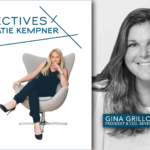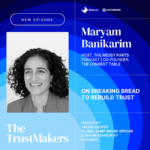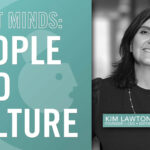By Alison Harding, VP Data Solutions, EMEA at Lotame
There’s a revolution happening in digital advertising, but most agencies haven’t noticed. The traditional method of running a digital campaign — where audience data is plugged into programmatic platforms that scour the web for inventory this audience might see — often clashes with the realities of an increasingly complex advertising ecosystem. Now, thanks to advances in data technology, audiences can be mapped even more precisely to inventory, saving agencies time and money while delivering KPI-smashing results to clients.
Using data as a treasure map to audience gold
As consumer attention scatters across an ever-growing array of ad-supported platforms and media, finding the right audience in the right place at the right time — the core promise an agency makes to its clients — is like finding a needle in a haystack while more hay is being piled on top.
Programmatic advertising’s automated systems haven’t been able to keep pace with digital media’s ballooning complexity, and we’re still seeing instances of ads showing up on made-for-advertising sites or across suboptimal destinations rather than high-quality, high-engagement media.
But what if this process could be flipped on its head? Instead of sifting through an endless river of inventory with the hope of striking gold, agencies can now work backwards from the media that their target audiences are engaging with. This is achieved by monitoring the behaviours of billions of interwoven data signals, effectively creating a map of online activity. Agencies can use this map to mark an X precisely where treasured consumers can be found.
In the ad tech world, this approach is called curation, and it doesn’t just improve targeting: it eliminates waste, reduces costs, and delivers results that leave industry benchmarks in the dust. With so many accolades under its belt, curation has become one of the hottest buzzwords in ad tech, but in my conversations with agencies I’ve realised no one outside our bubble knows what it is — which is why I penned this explainer.
But actions speak louder than words, so let’s take a look at how curation can be deployed in a digital campaign.
Curation in action: tequila’s surprise appeal to health-conscious consumers
Imagine you’re an agency helping a premium spirits brand sell some of the “lake” of tequila that’s amassed in Mexico. The typical approach might be to target cocktail enthusiasts on food and drink websites. But what if data showed that these consumers were just as likely to be browsing high-end travel sites or exploring financial advice platforms? By deploying curation, agencies can identify inventory across the entirety of an audience’s online footprint.
After all, just because someone enjoys tequila doesn’t mean they have ever visited a food and drink website. Real people possess a complex mix of interests and passions, many of which will be enjoyed entirely “offline”. Better yet, because these high-affinity placements are beyond the scope of ordinary programmatic pipelines, there’s less competition and more opportunity to stand out.
Curation’s insights delve far deeper than surface level, off-the-shelf audience segments, which can have a profound impact not just on targeting but the entire notion of who a campaign should reach and which cultural trends can be piggybacked on.
Sticking with the premium tequila example, data shows us that the luxury spirits audience isn’t just made up of affluent connoisseurs, it includes a significant portion of health-conscious consumers deeply interested in vegan cuisine, kitchen equipment, and grilling. Knowing this affects not just which placements to prioritise, but how to position a brand’s products and which messaging and imagery to include.
With this in mind, framing tequila as a refined, low-calorie accompaniment to sophisticated home dining would resonate with prospective consumers who may not have even been on the map if not for data-driven curation.
The curation cure for digital advertising’s many ailments
Along with higher engagement, agencies leveraging curation can squeeze more from their budgets, as its data driven approach doesn’t just identify high-affinity placements, it also reveals the most cost-effective. By integrating multiple supply-side platforms to source bang-for-your-buck inventory, curated campaigns achieve significant savings, cutting inefficiencies by as much as a third.
If you’ve been looking for richer audience insights and an expanded list of publisher opportunities, curation is your route to a more optimised supply chain.
Another feather in curation’s cap is its ability to balance brand safety with reach. Many agencies still rely on blanket exclusion lists to avoid risky content, but this often leads to missed opportunities, especially in premium news environments which offer high engagement placements but fall foul of overzealous brand safety tools. With curation, agencies can fine-tune their criteria to match their brand’s values and goals, ensuring they appear in trusted, brand-safe environments without sacrificing reach or relevance.
There’s more to curation than cost savings and efficiency, it’s about forging meaningful connections between brands and consumers. Hyper-targeted digital advertising often feels robotic and invasive, with eerily personal or prescient messaging that pours fuel onto the fire of public privacy concerns.
Curated campaigns are precise without getting personal, placing ads in contexts that make sense, complementing both environment and audience. When an ad appears alongside content that aligns with a consumer’s interests and values, engagement skyrockets. This isn’t just beneficial for brands, it enhances the user experience, making advertising feel more like a value-add than an unwelcome intrusion.
At its core, curation is about control. It’s about ensuring that brands are investing in placements that align with their values, meet their safety standards, and, most importantly, reach real people with real intent. Unlike black-box programmatic solutions that leave agencies guessing where their ads will land, curation offers complete transparency. Every impression is accounted for, and every placement is intentional.
As algorithms and automation sometimes leave advertisers with questions, forward-thinking agencies are welcoming the winds of change into their sails. They’re opting for a leaner, cleaner curated approach that delivers precision, performance, and transparency. It’s a revolution in media buying that most agencies don’t know about yet. But now you do, so don’t get left behind.











